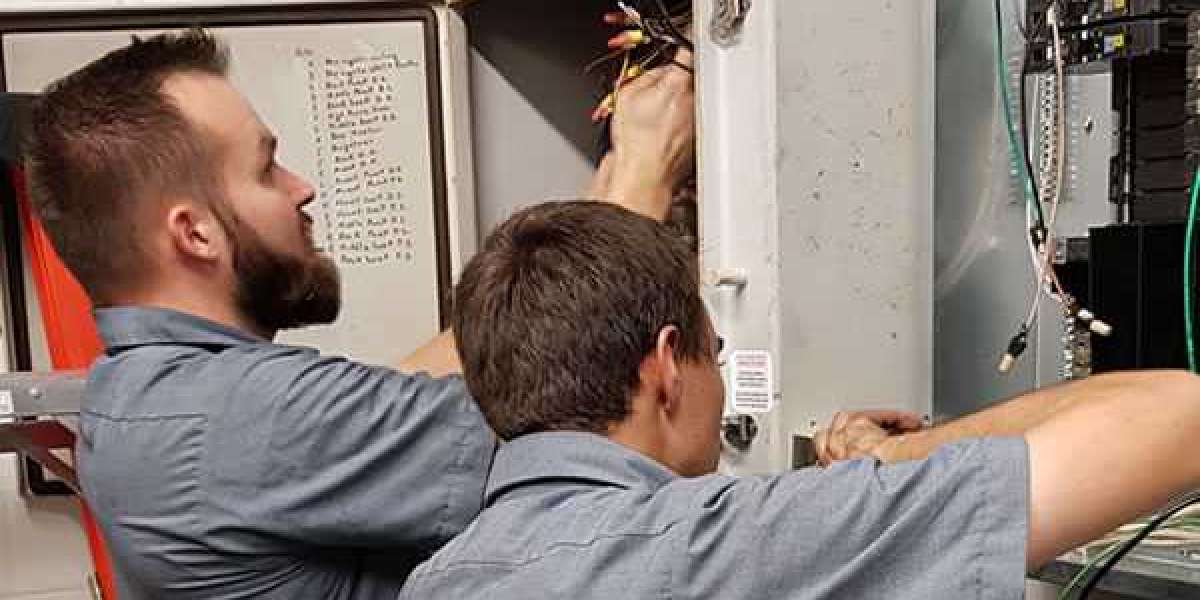When people think of electric companies , the first image that often comes to mind is of utility poles, tangled wires, and the simple flip of a switch that lights up a room. But behind that convenience is a fast-evolving, high-tech industry that is driving some of the biggest innovations of our time. Today's electric companies are no longer just suppliers of power; They are becoming key players in the global push toward sustainability, smarter homes, and digital transformation.
Let's dive into how modern electric companies are lighting the way—both literally and metaphorically—for a more innovative and sustainable world.
The Digital Shift: From Traditional Utilities to Smart Energy Providers
The traditional electricity model was linear: generate power at a central plant and distribute it to homes and businesses. But with the rise of smart grids, real-time data analytics, AI, and IoT (Internet of Things), electric companies are transforming into tech-driven service providers .
Smart meters, for instance, are now replacing analog versions, giving customers real-time feedback on their energy usage. This not only empowers consumers to make smarter choices but also helps companies monitor demand, detect outages instantly, and manage loads more efficiently.
Advanced distribution management systems (ADMS) are another innovation allowing utility providers to respond faster to faults and automate the rerouting of power to avoid blackouts. This means a more reliable energy supply and better disaster response during storms or overloads.
Empowering Homes with Smart Technology
Thanks to modern electric companies, the average home is getting a high-tech makeover. Through partnerships with smart home providers or offering their own devices, electric utilities are helping people integrate technologies like:
- Smart thermostats
- Connected lighting
- Automated HVAC systems
- Smart EV chargers
This integration is more than convenience—it's about optimizing energy consumption and reducing costs. By automating how and when energy is used, homeowners can cut down on unnecessary electricity use without sacrificing comfort.
Take time-of-use pricing models, for example. Some utilities now offer plans where electricity is cheaper during off-peak hours. When connected to smart devices, this can mean charging your EV or running appliances when power is more affordable and the grid is less stressed.
Sustainability at the Core of Their Mission
One of the biggest challenges electric companies face today is helping tackle climate change. Electricity generation has historically been one of the largest contributors to carbon emissions, but this is changing rapidly. Utility providers are now investing heavily in renewable energy sources like:
- Solar farms
- Wind turbines
- Hydroelectric plants
- Biomass and geothermal energy
In fact, according to the International Energy Agency (IEA) , renewables are expected to account for almost 90% of the global increase in total power capacity through 2025. (Source).
Many electric companies are also committing to net-zero targets. They're retiring coal plants ahead of schedule, electrifying their vehicle fleets, and investing in carbon capture technologies. But they're not just doing it for the environment—they're responding to customer demand. Today's consumers are more eco-conscious than ever and expect their utility providers to align with their values.
Grid Modernization: Building Infrastructure for the Future
The current grid infrastructure in many countries was designed for a one-way flow of electricity. That no longer suits a world where solar panels are on rooftops and EVs can feed energy back into the system. To meet modern needs, electric companies are investing in grid modernization .
This includes:
- Bidirectional energy flow to accommodate decentralized power sources like home solar systems
- Battery energy storage systems (BESS) to store excess renewable energy
- Microgrids that can operate independently during outages or emergencies
With these upgrades, the energy grid becomes more flexible, resilient, and able to accommodate unpredictable surges and dips in usage or generation. This also ensures continuity during disasters, cyber-attacks, or system overloads.
Electric Vehicles and the Role of Utilities
The EV revolution isn't just about the vehicles themselves—it's about the infrastructure that supports them. Electric companies are playing a crucial role in building a nationwide or even global charging network. They are:
- Installing fast-charging stations
- Offering rebates or incentives for home EV chargers
- Integrating EVs into grid planning
The growth is astonishing. As of 2024, there are over 40 million electric vehicles on roads worldwide , and this number is expected to rise exponentially (Statista).
This surge demands that electric utilities not only provide the electricity but also ensure the grid can handle the added load. Many are turning to predictive analytics to forecast demand and are planning infrastructure expansion accordingly.
Customer-Centric Innovations
In the past, customers typically only interacted with their electric company when paying a bill or reporting an outage. That's changing. Today's electric companies are rebranding themselves as energy partners rather than mere suppliers.
Digital apps now allow customers to:
- Monitor real-time usage
- Pay bills and track savings
- Set energy goals
- Access rebates or efficiency tips
This shift to a more interactive and user-friendly model is driven by consumer expectations shaped by tech companies like Apple, Google, and Amazon. Utilities are stepping up their game in customer experience by investing in digital transformation.
Education and Community Engagement
Beyond technology, electric companies are also getting involved in educating the public and supporting local sustainability initiatives. Some sponsor school programs that teach kids about renewable energy, while others invest in community solar projects that allow neighborhoods to benefit from solar power without installing panels.
Companies are also engaging with cities and governments to develop smarter urban infrastructure—supporting smart streetlights, EV-friendly road designs, and energy-efficient building codes.
Cybersecurity and Grid Protection
As power grids become more digitized, they also become more vulnerable to cyberattacks. Electric companies are investing in cybersecurity infrastructure to protect this critical asset. With ransomware attacks on the rise, this has become a top priority.
AI and machine learning are being used to detect irregularities and intrusions in real-time. Many companies now operate cyber command centers specifically designed to monitor and respond to threats, ensuring national security and grid reliability.
Workforce Evolution and Green Jobs
As the electric utility industry transforms, so does its workforce. Linemen and engineers are now joined by data scientists, AI specialists, and cybersecurity experts. There's a growing demand for skilled talent in emerging technologies, energy management, and sustainability.
This shift is creating what some call the “green collar workforce” — jobs that support a low-carbon economy while offering career stability and advancement. Apprenticeships, training programs, and partnerships with universities are helping companies build this next-gen workforce.
Conclusion: Lighting the Way to a Smarter Future
Electric companies today are no longer the silent force behind the curtain. They're at the forefront of a technological and environmental revolution, powering more than just our homes and businesses. They're enabling a future where sustainability and innovation are not just buzzwords, but everyday realities.
From smart homes and EVs to clean energy and digital apps, they are deeply woven into the fabric of how we live, work, and plan for tomorrow. As we navigate the challenges of climate change, urbanization, and digital transformation, the humble electric company is proving to be an essential architect of the smarter, greener world ahead.
So, the next time you flip a switch, remember—it's not just about wires. It's about a future being quietly and powerfully built behind the scenes.



